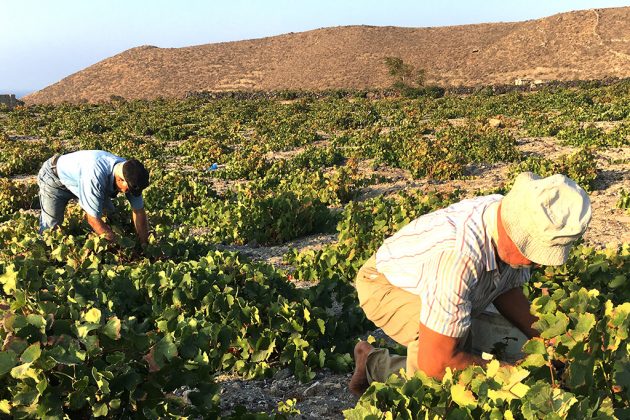Santorini island news
Vedema in Santorini
Preparations for the vedema (grape harvest) in Santorini usually began in the early days of August. This year’s grape harvest is quite early, about 10 days earlier than usual, and started as always with white wine grape varieties followed by the red ones towards the end.
The winter drought combined with the recent drizzle, which resulted in high humidity, did not help the grapes ripe in the most optimal way. In general, the yield per hectare is low, the winemakers are many, the grapes are sought after, and the grape prices are rising. One thing is certain, however: for yet another year we look forward to excellent Santorini wines!
A few words about the tradition of wine making: The word Vedema is Italian and means grape harvest. The grapes were brought from the vine to the canava (winery) and, depending on their color (white or black), they were put into separate wine vats. Then they were crushed by foot and their juice was stored in barrels. Crushing the grapes by foot was not an easy job. Anyone who stepped into a vat to stomp should have to withstand the smell of the must without feeling dizzy. Grape-stomping started in the enening. Those who participated, washed their feet well and were lightly dressed. They tied a scarf around their heads and fitted a twig of basil on their ear to smell.
The sun-dried grapes, after remaining in the sun for ten days, were put into a winepress. The final product of the whole process is the famous Vinsanto. When grape stomping ended a big feast was held.
On October 22, on the day of the feast of St. Averkios, the barrels are opened for wine tasting. The barrels are blessed by a priest with a twig of basil. Then the new wines are served during a traditional feast with local dishes, songs and dances.

